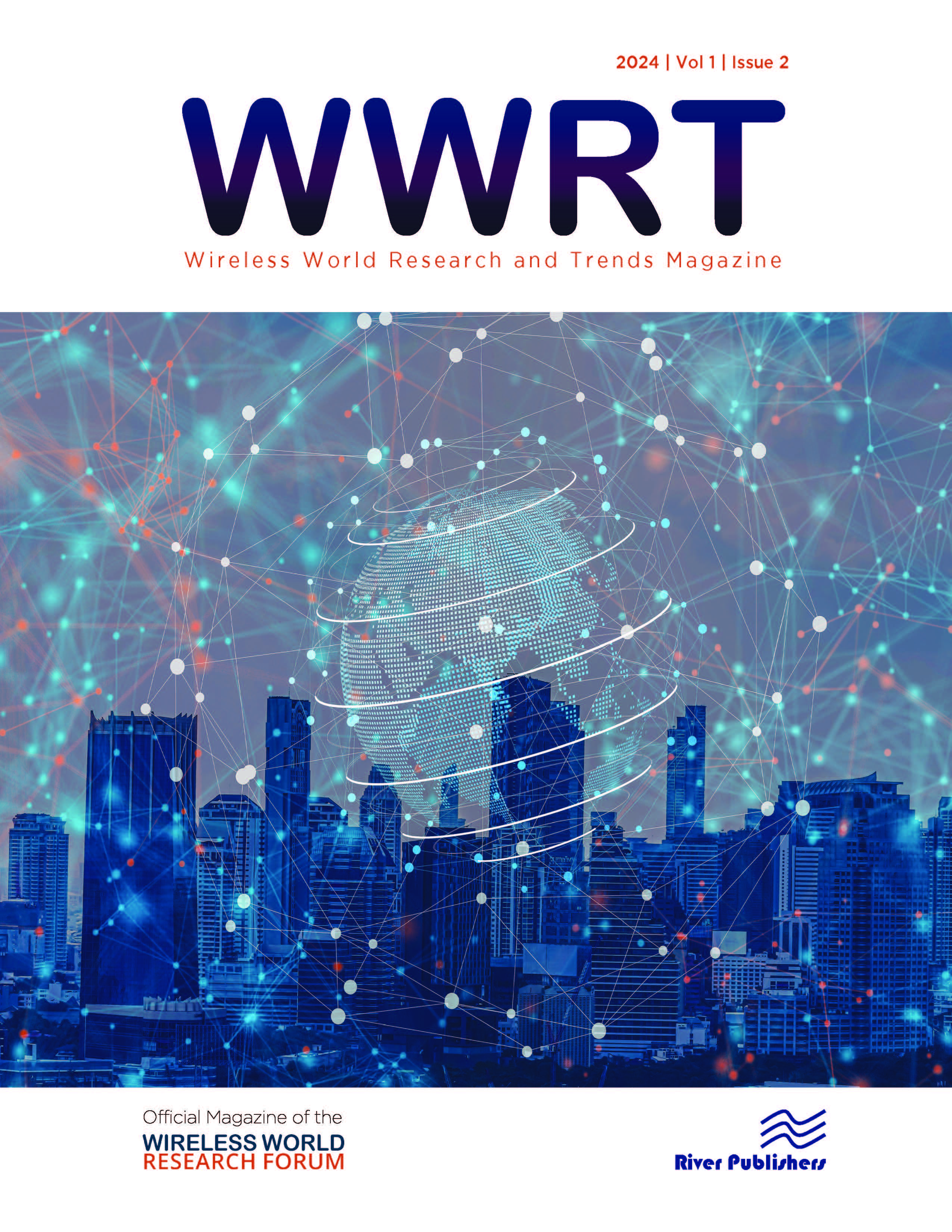Abstract
Vehicle-to-Everything (V2X) communication is a technology that enables vehicles to communicate with other vehicles (V2V), infrastructure (V2I), cyclists, and pedestrians (V2P). V2X employs antenna technology that allows omnidirectional wireless data transmission between all nodes in the transportation ecosystem. This has strong implications for improving pedestrian safety, reducing traffic congestion, and enabling smart city applications. One area where V2X can have a tremendous impact is at pedestrian crosswalks. Currently, these are dangerous zones where vehicle-pedestrian collisions occur frequently due to blind spots, distracted driving/walking, and unclear right-of-way. V2X aims to eliminate these collisions by allowing vehicles and pedestrian smartphones to continuously share their real-time locations, trajectories, and analytics. This seamless connectivity is enabled by V2X antennas embedded in cars and mobile devices. The primary goal of this research is to increase the safety of pedestrians on and near crosswalks positioned on roadways. The Altair FEKO 2022.1 software is used in this study to create a symmetrical V2X communication scenario with intersecting highways. Cars, pedestrians, roads, and traffic lights are arranged in the Altair WallMan Computer-Aided Design (CAD) software. The Shooting Bouncing Ray (SBR+) solver in Altair ProMan is computed on a CAD-modelled database to simulate the power received at key prediction points on crosswalks in the path of each vehicle. Intelligent Ray Tracing (IRT) is utilized to animate the scene with moving cars and pedestrians over a three-second time interval while simultaneously counting the number of propagation pathways and rays used at each instant. At each prediction time instant and for every prediction point, power received is measured in decibel-milliwatts (dBm). The computed simulation results are analysed at 5.8 GHz, 6 GHz, and 28 GHz.
References
ITF (2012), “Pedestrian Safety, Urban Space and Health,” In International Transport Forum, OECD Publishing, pages 116, Paris.
Abdullah MFA, Yogarayan S, Abdul Razak SF et al (2023), “Edge computing for Vehicle to Everything: a short review” [version 4; peer review: 1 approved, 2 approved with reservations, 3 not approved]. F1000Research 2023, 10:1104.
Arshi, O., Mondal, S. (2023), “Advancements in sensors and actuators technologies for smart cities: a comprehensive review,” Smart Constr. Sustain. Cities 1, 18.
Patella, Sergio Maria, Simone Sportiello, Stefano Carrese, Francesco Bella, and Francesco Asdrubali (2020), “The Effect of a LED Lighting Crosswalk on Pedestrian Safety: Some Experimental Results” Safety 6, no. 2: 20.
K. D. S. A. Munasinghe, T. D. Waththegedara, I. R. Wickramasinghe, H. M. O. K. Herath and V. Logeeshan (2022), “Smart Traffic Light Control System Based on Traffic Density and Emergency Vehicle Detection,” 2022 Moratuwa Engineering Research Conference (MERCon), Moratuwa, Sri Lanka, 2022, pp. 1–6.
P. Kumar and K. B. Ali (2022), “Intelligent Traffic System using Vehicle to Vehicle (V2V) & Vehicle to Infrastructure (V2I) communication based on Wireless Access in Vehicular Environments (WAVE) Std,” 2022 10th International Conference on Reliability, Infocom Technologies and Optimization (Trends and Future Directions) (ICRITO), Noida, India, pp. 1–5.
R. Weber, J. Misener and V. Park (2019), “C-V2X – A Communication Technology for Cooperative, Connected and Automated Mobility,” Mobile Communication – Technologies and Applications; 24, ITG-Symposium, Osnabrueck, Germany, pp. 1–6.
F. A. Butt, J. N. Chattha, J. Ahmad, M. U. Zia, M. Rizwan and I. H. Naqvi (2022), “On the Integration of Enabling Wireless Technologies and Sensor Fusion for Next-Generation Connected and Autonomous Vehicles,” in IEEE Access, vol. 10, pp. 14643–14668.
Syed Adnan Yusuf, Arshad Khan, Riad Souissi (2024), “Vehicle-to-everything (V2X) in the autonomous vehicles domain – A technical review of communication, sensor, and AI technologies for road user safety,” Transportation Research Interdisciplinary Perspectives, Volume 23.
J. van Tonder et al. (2023), “Latest Features in Altair Feko 2022,” 2023 International Applied Computational Electromagnetics Society Symposium (ACES), Monterey/Seaside, CA, USA, pp. 1–2.
H. Hultin, H. Frid, B. L. G. Jonsson and J. Malmström (2024), “Investigation of Near-Field Contribution in Shooting and Bouncing Rays for Installed Antenna Performance on a Simple Platform,” 2024 18th European Conference on Antennas and Propagation (EuCAP), Glasgow, United Kingdom, pp. 1–5.
E. H. Newman (1988), “Simple examples of the method of moments in electromagnetics,” in IEEE Transactions on Education, vol. 31, no. 3, pp. 193–200.
Christian Ballesteros, Luca Montero, Germán A. Ramírez, Luis Jofre-Roca (2022), “Multi-antenna 3D pattern design for millimeter-wave vehicular communications,” Vehicular Communications, Volume 35.
Raiful Hasan, Ragib Hasan (2022), “Pedestrian safety using the Internet of Things and sensors: Issues, challenges, and open problems,” Future Generation Computer Systems, vol. 134, pp. 187–203.
L. Italiano, B. C. Tedeschini, M. Brambilla and M. Nicoli (2024), “Pedestrian Positioning in Urban Environments with 5G Technology,” 2024 22nd Mediterranean Communication and Computer Networking Conference (MedComNet), Nice, France, pp. 1–6.
R. Dilli (2020), “Analysis of 5G Wireless Systems in FR1 and FR2 Frequency Bands,” 2020 2nd International Conference on Innovative Mechanisms for Industry Applications (ICIMIA), Bangalore, India, pp. 767–772.
A. Xia et al. (2018), “28 GHz MIMO Channel Capacity Analysis for 5G Wireless Communication Systems,” 2018 12th International Symposium on Antennas, Propagation and EM Theory (ISAPE), Hangzhou, China, pp. 1–4.
T. Zugno, M. Drago, M. Giordani, M. Polese and M. Zorzi (2020), “NR V2X Communications at Millimeter Waves: An End-to-End Performance Evaluation,” GLOBECOM 2020 – 2020 IEEE Global Communications Conference, Taipei, Taiwan, pp. 1–6.
Maxwell, James Clerk (1865). “A Dynamical Theory of the Electromagnetic Field.” Philosophical Transactions of the Royal Society of London, vol. 155.
D. Shi, X. Tang and C. Wang (2017), “The acceleration of the shooting and bouncing ray tracing method on GPUs,” 2017 XXXIInd General Assembly and Scientific Symposium of the International Union of Radio Science (URSI GASS), Montreal, QC, Canada, pp. 1–3.

